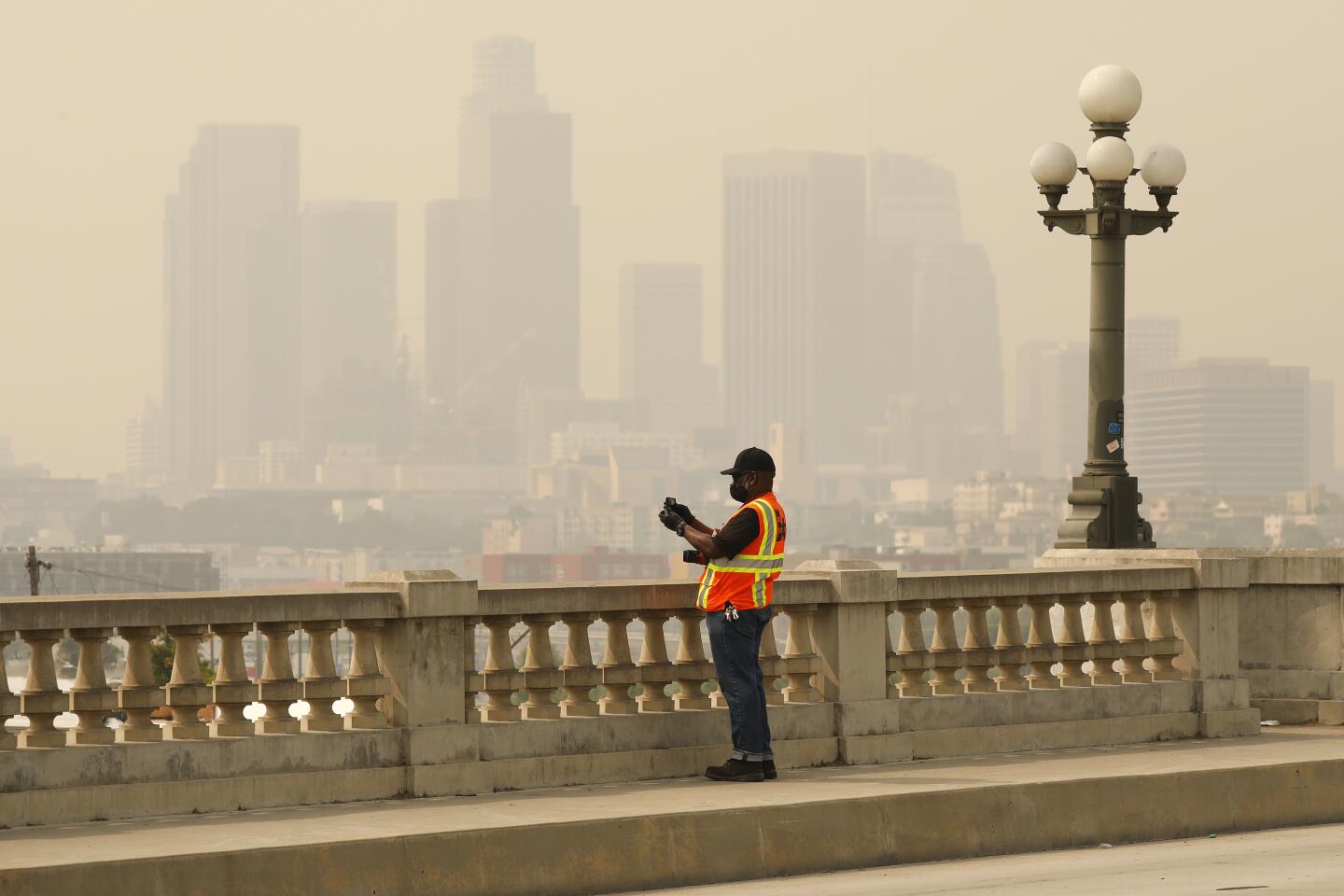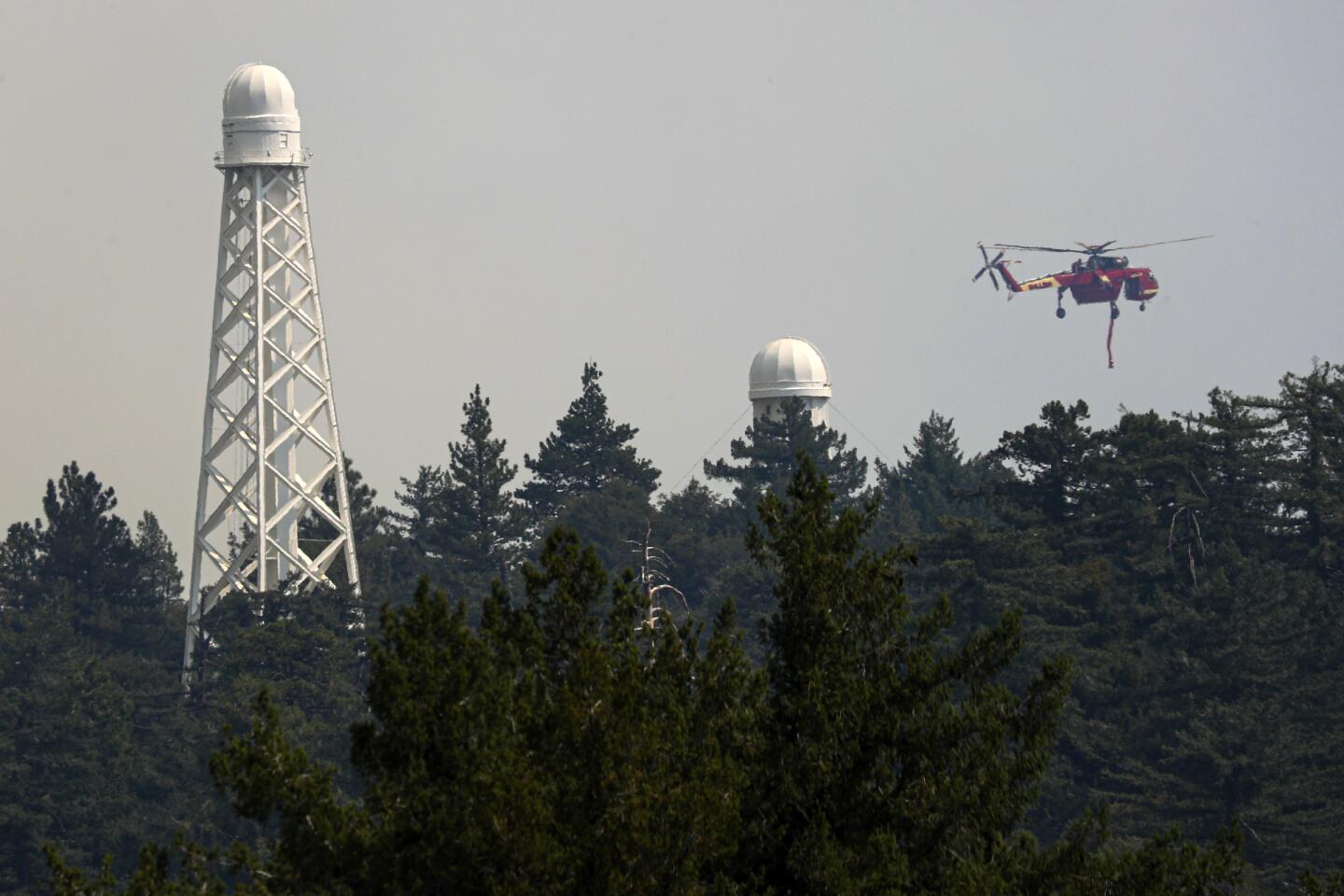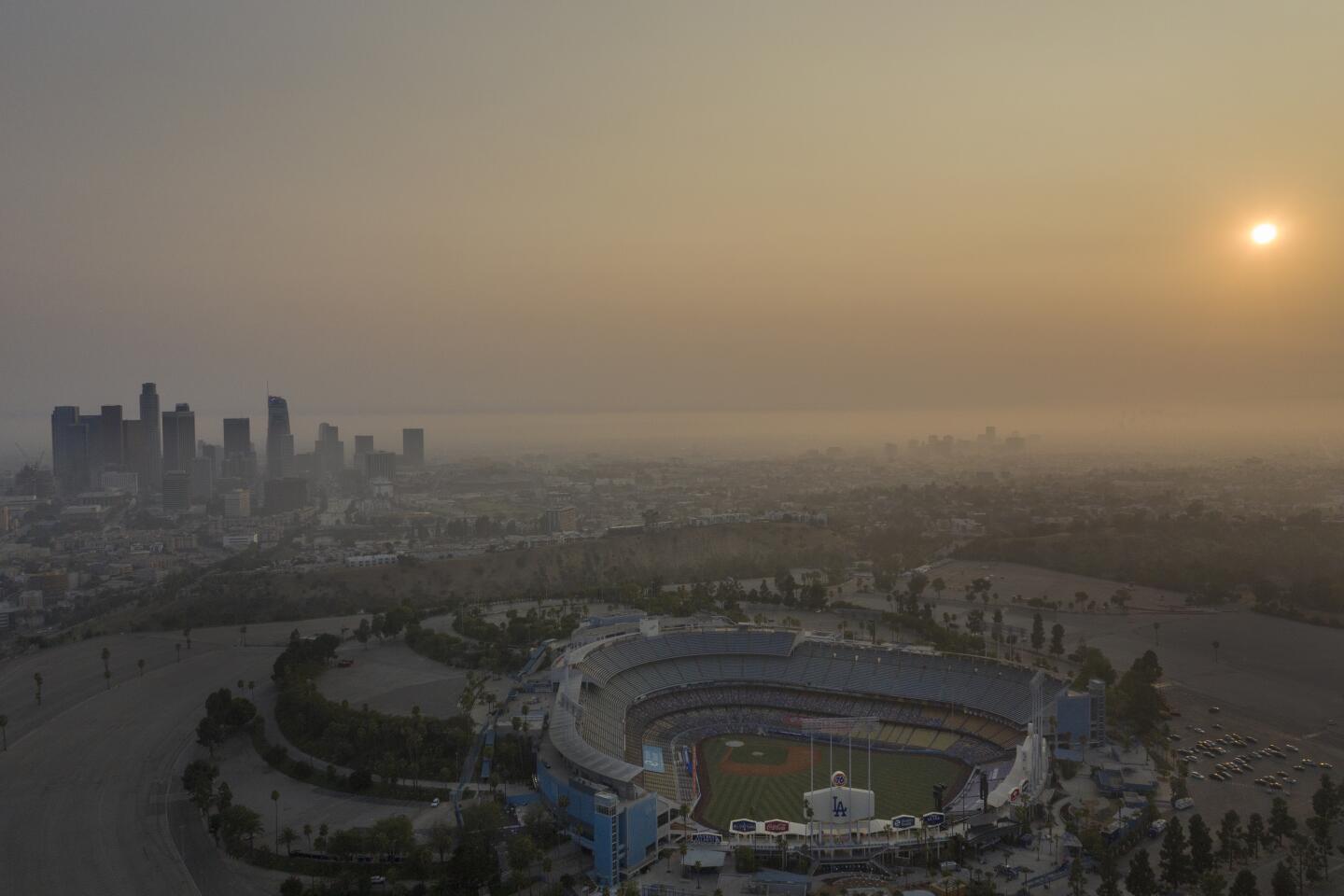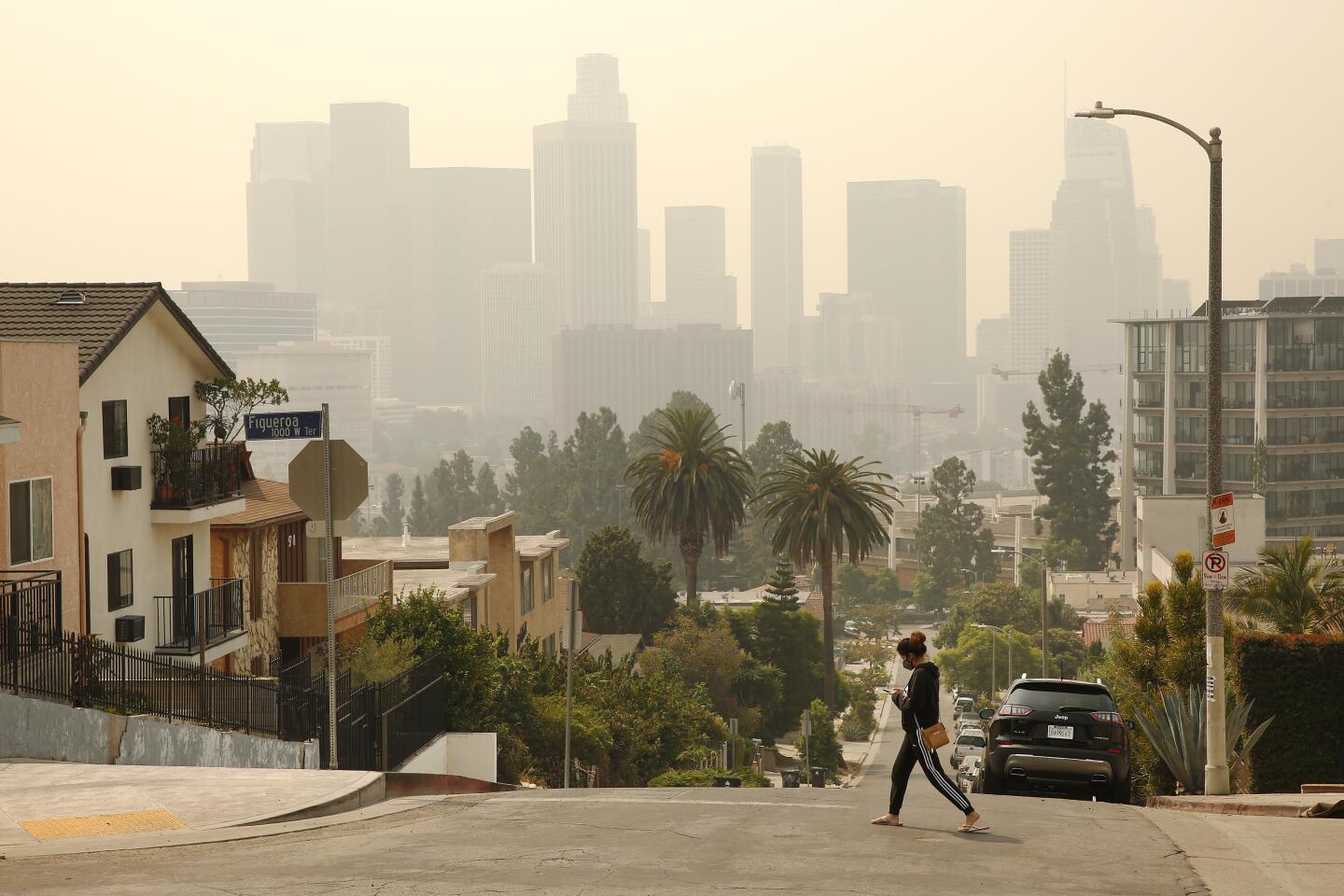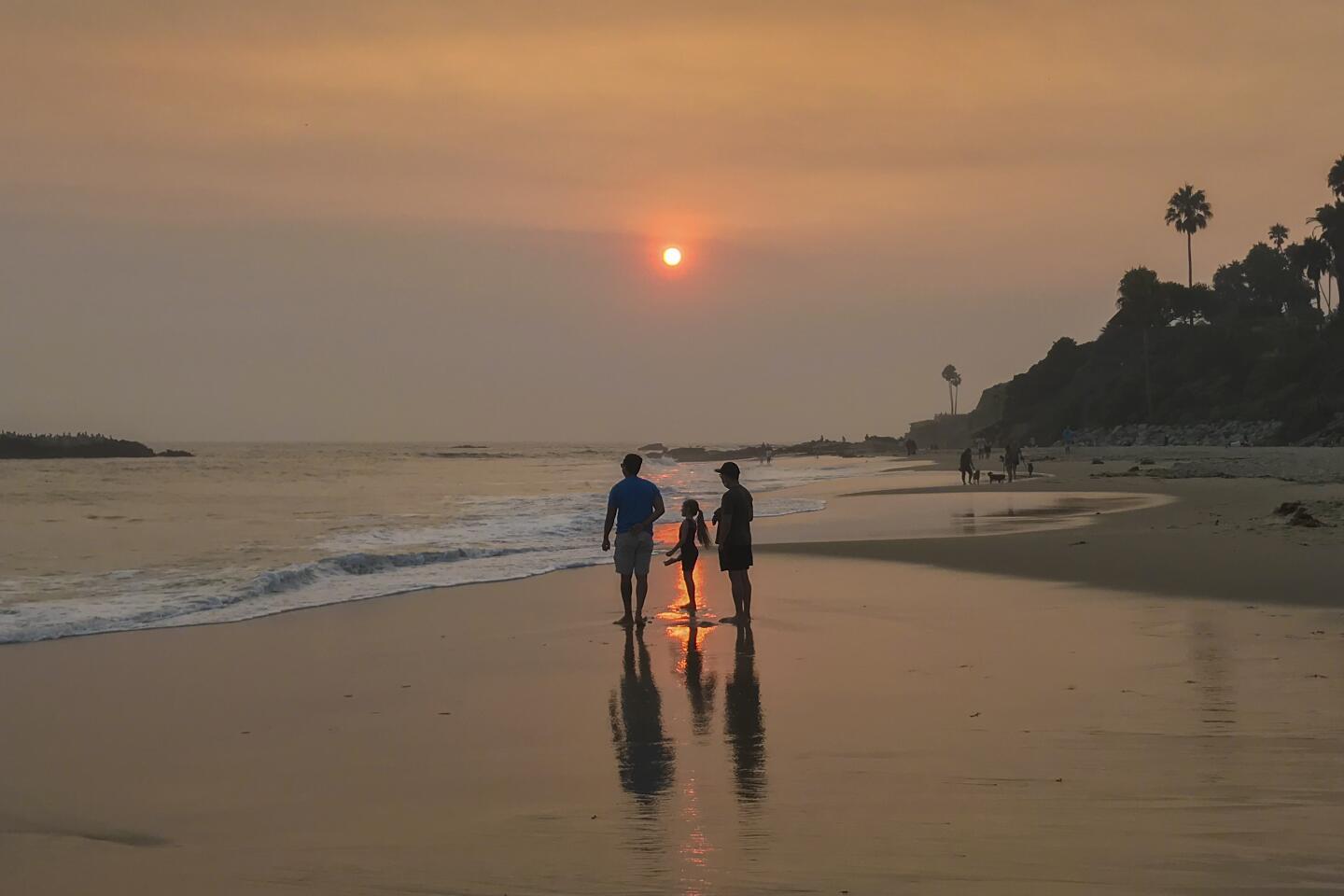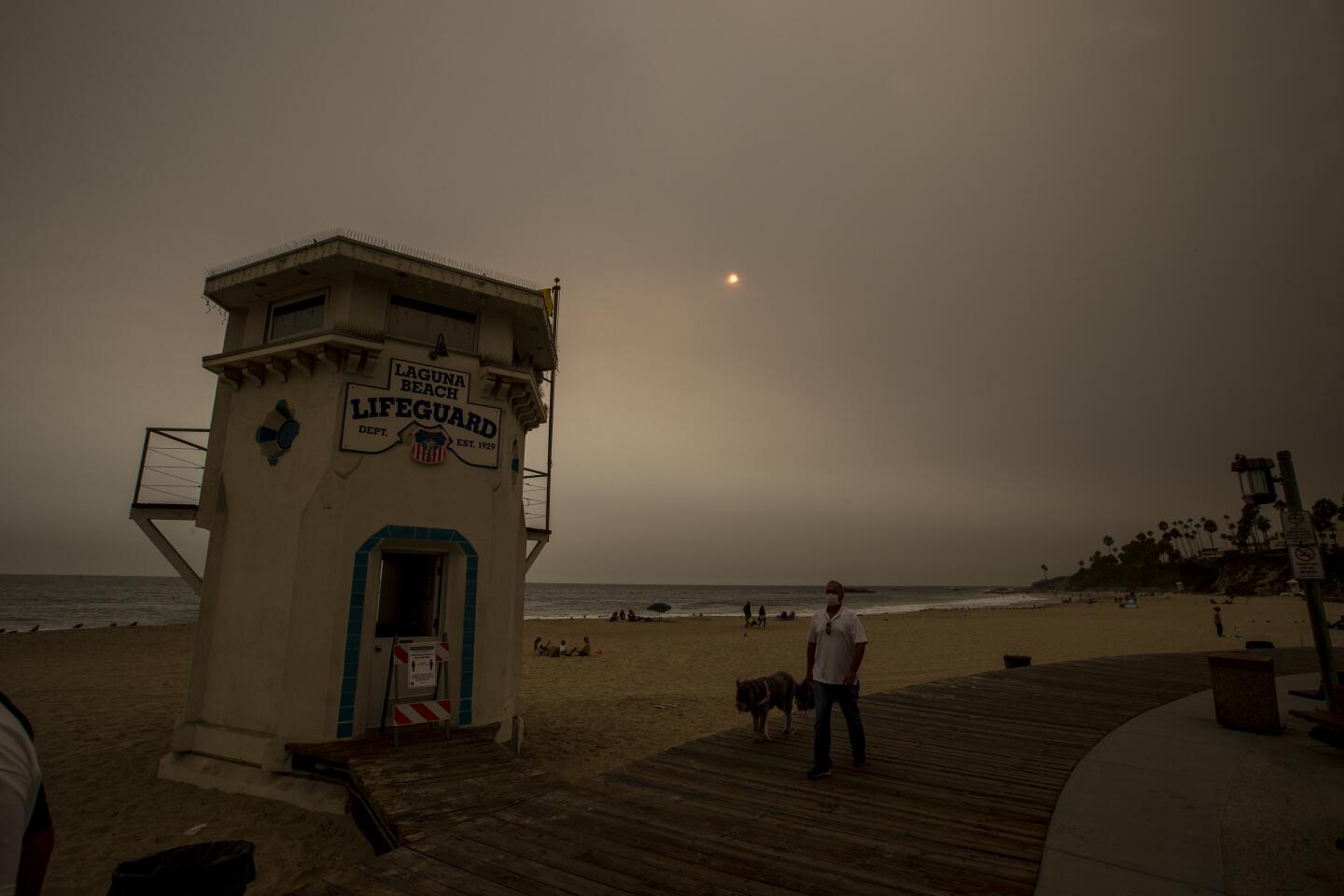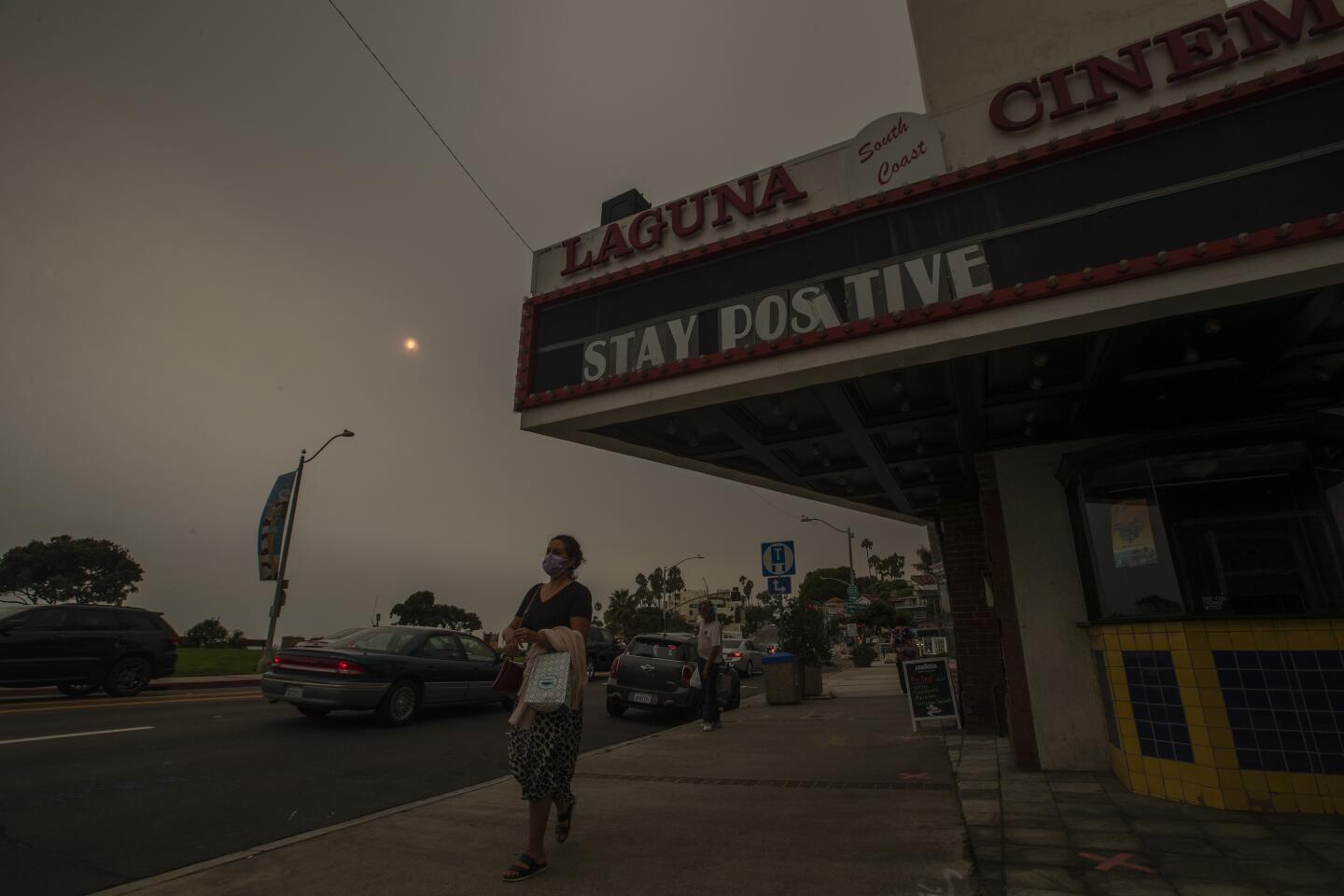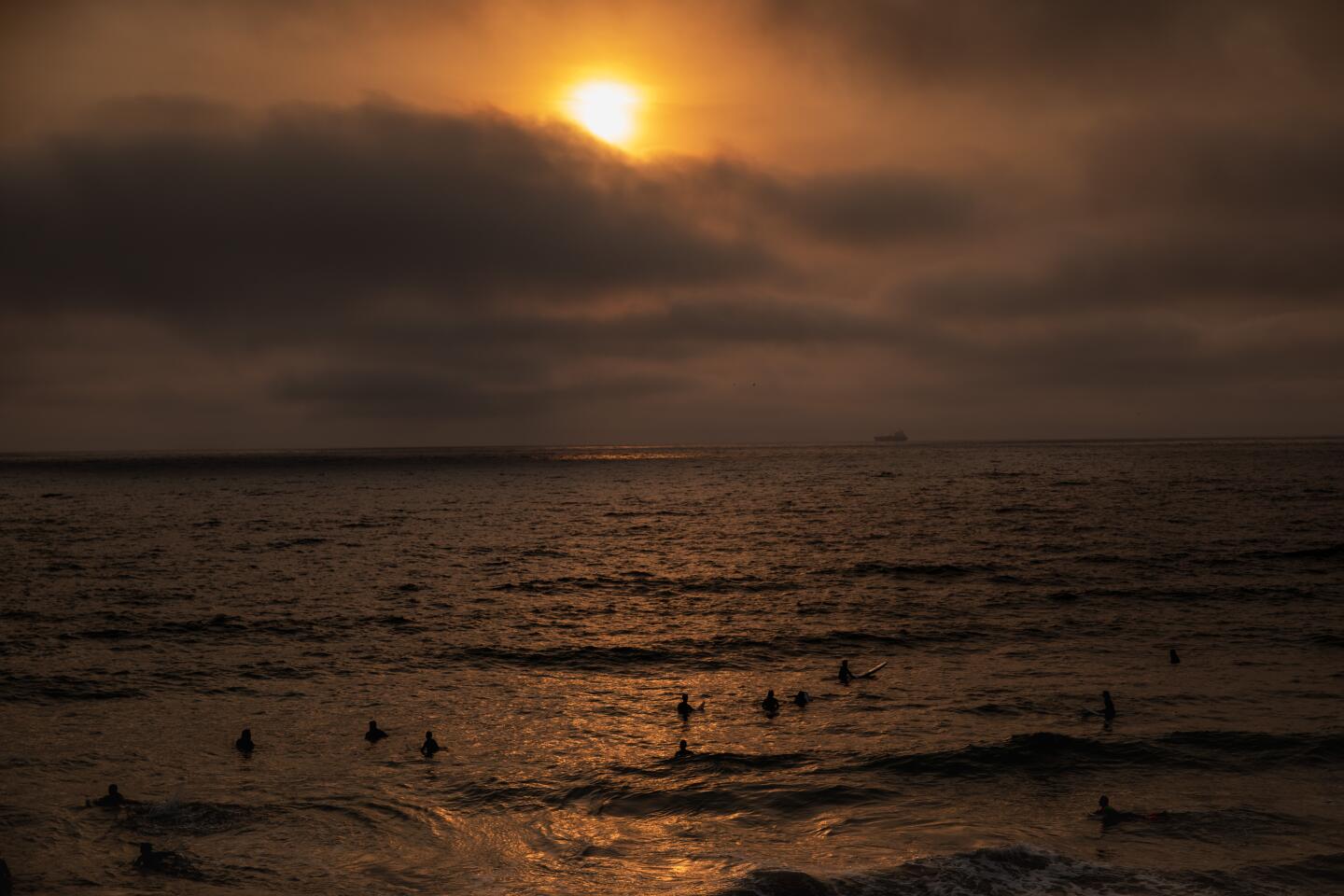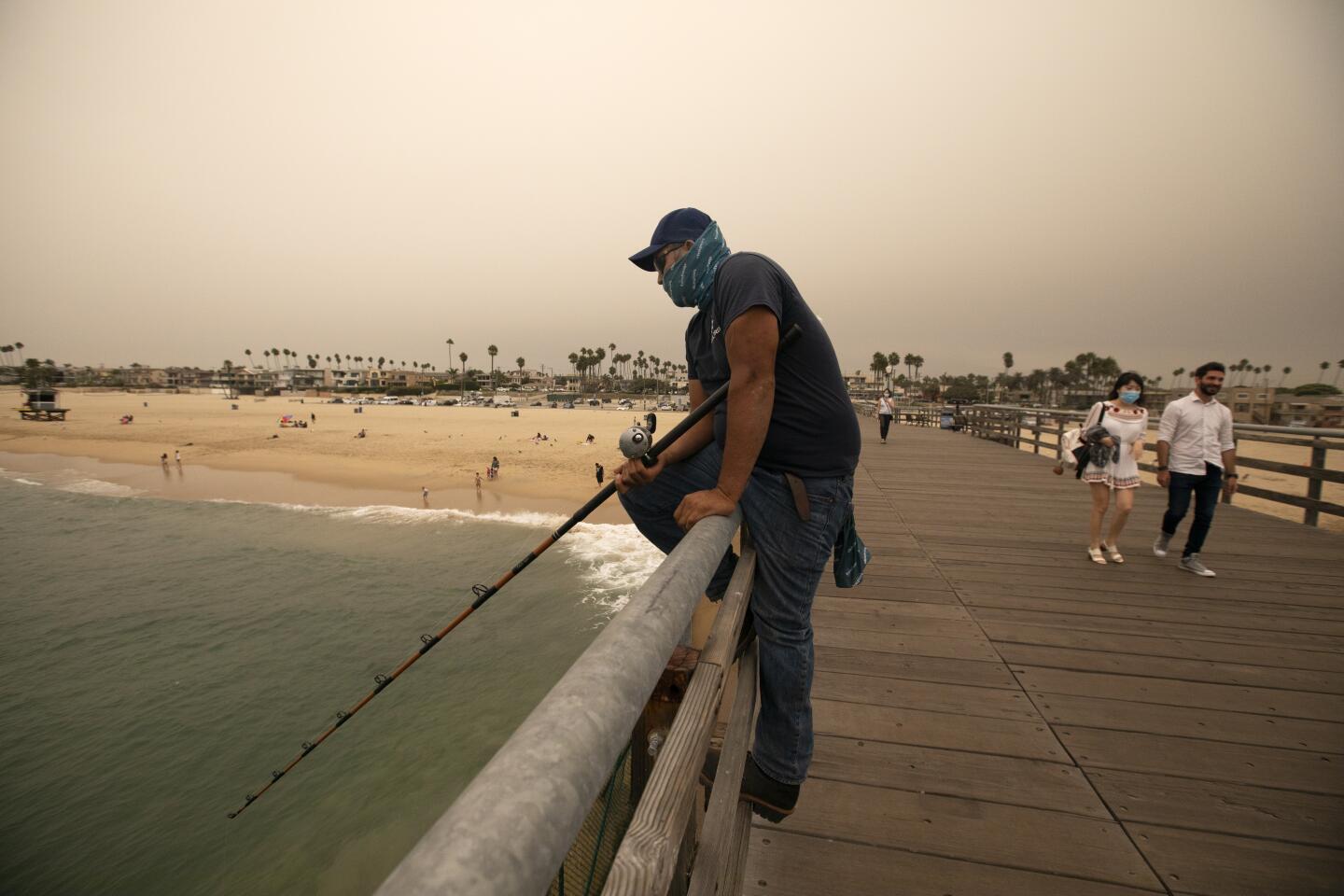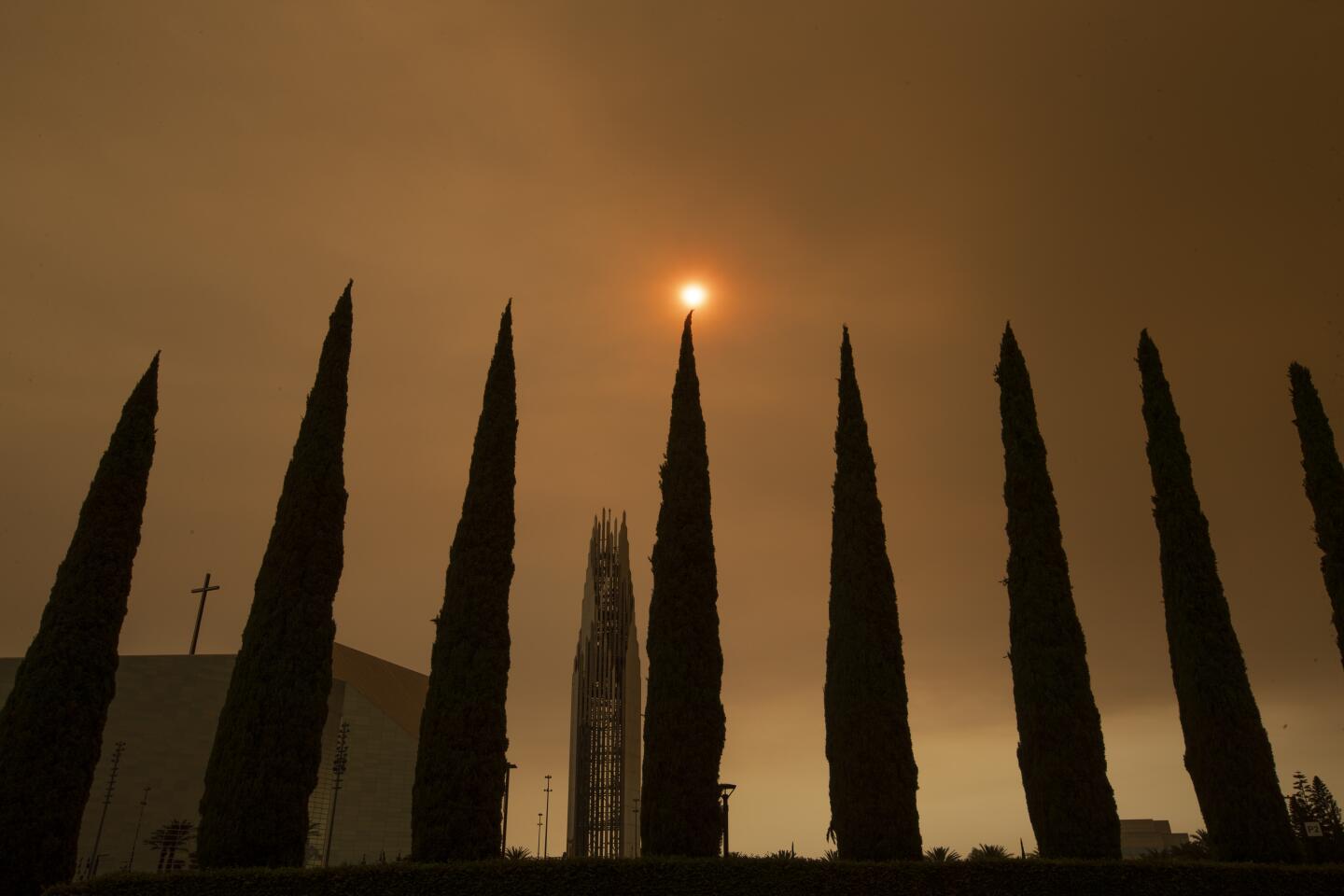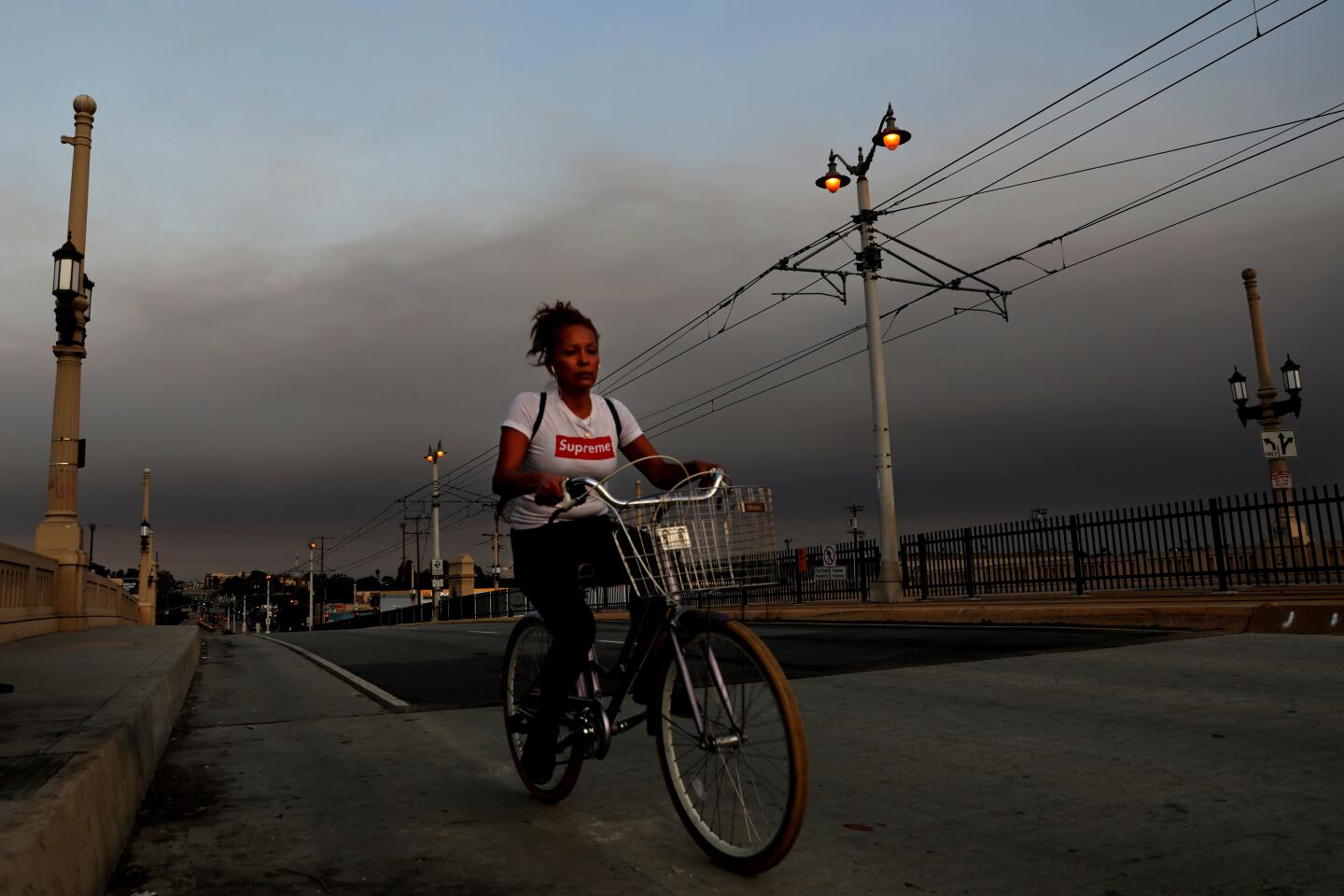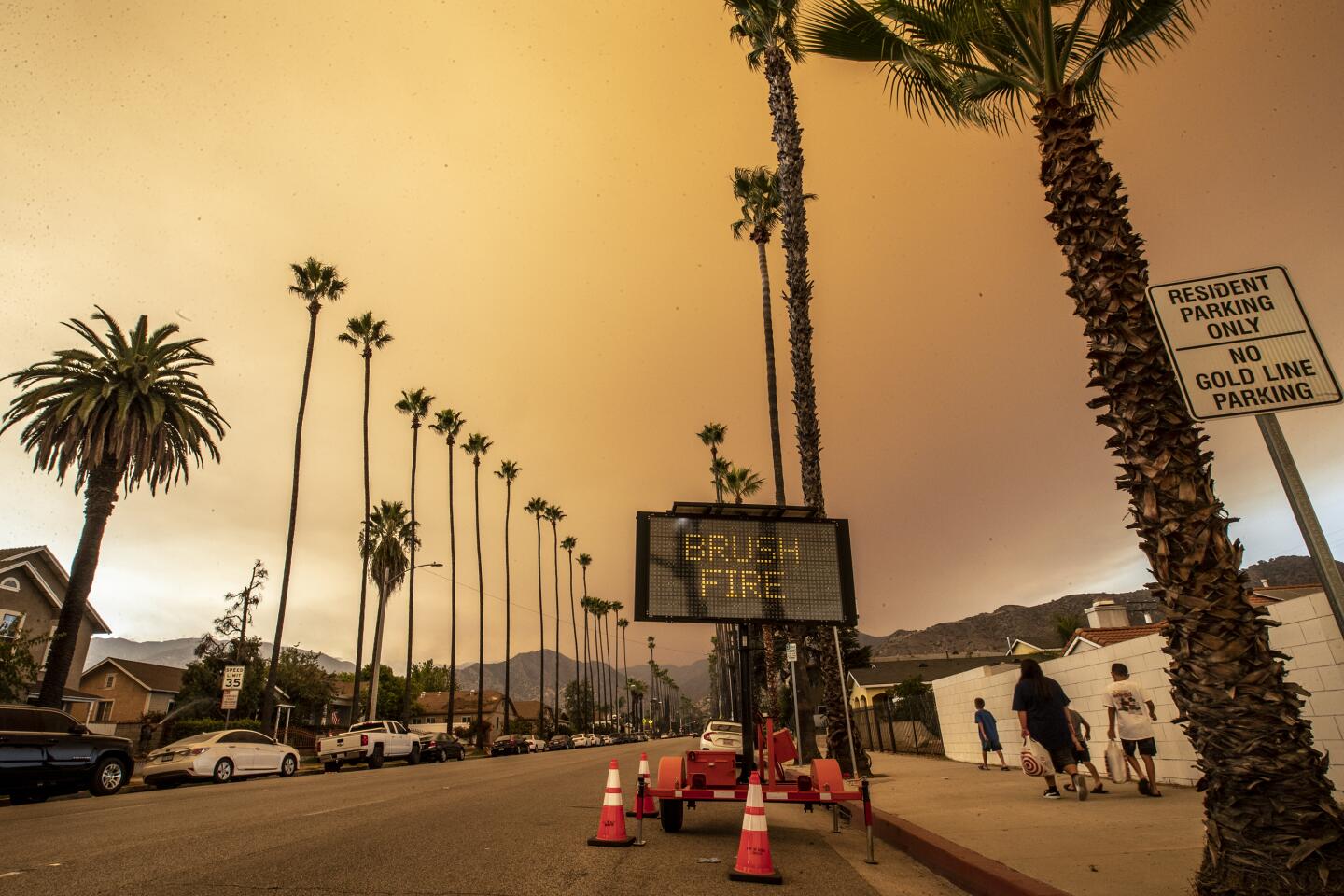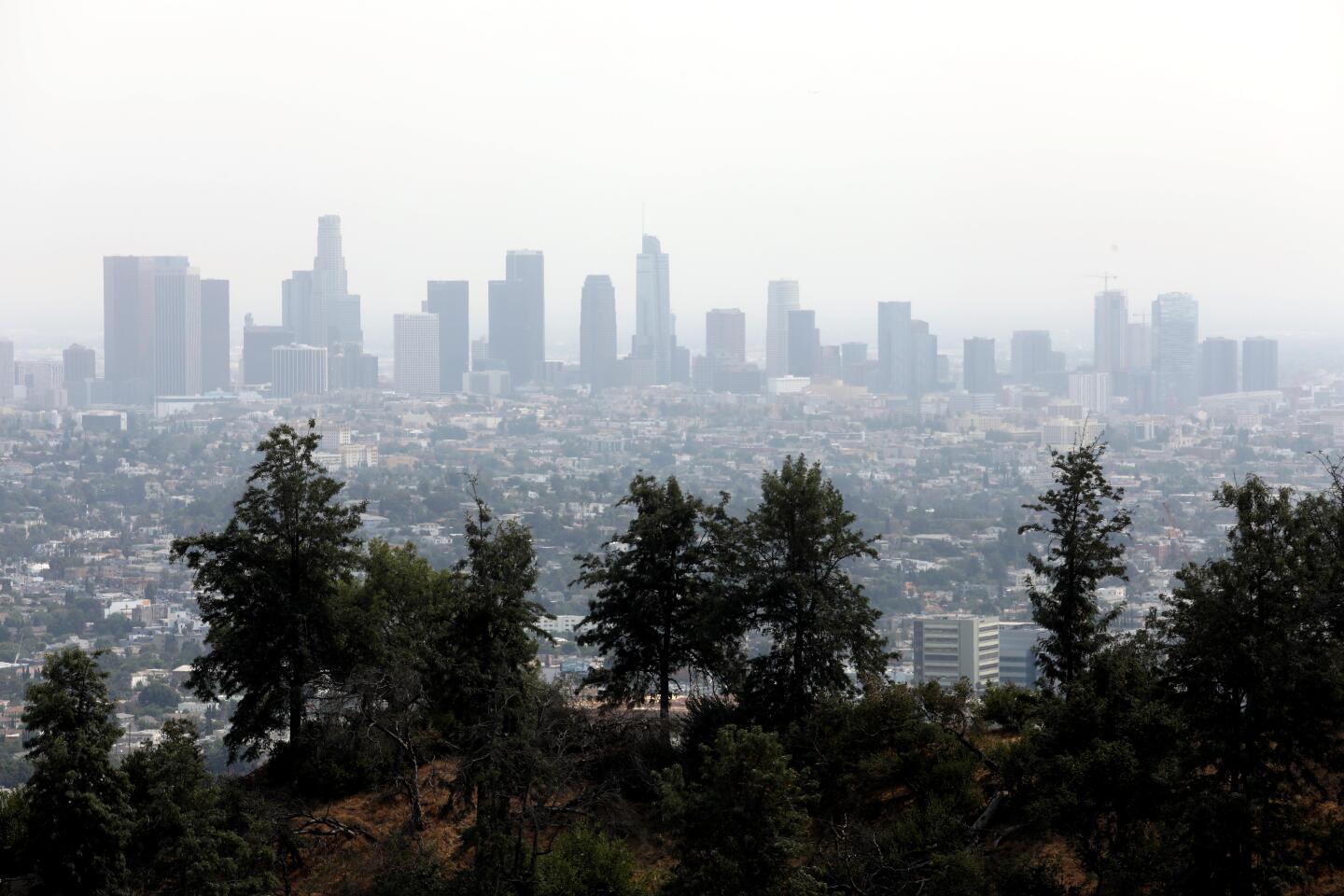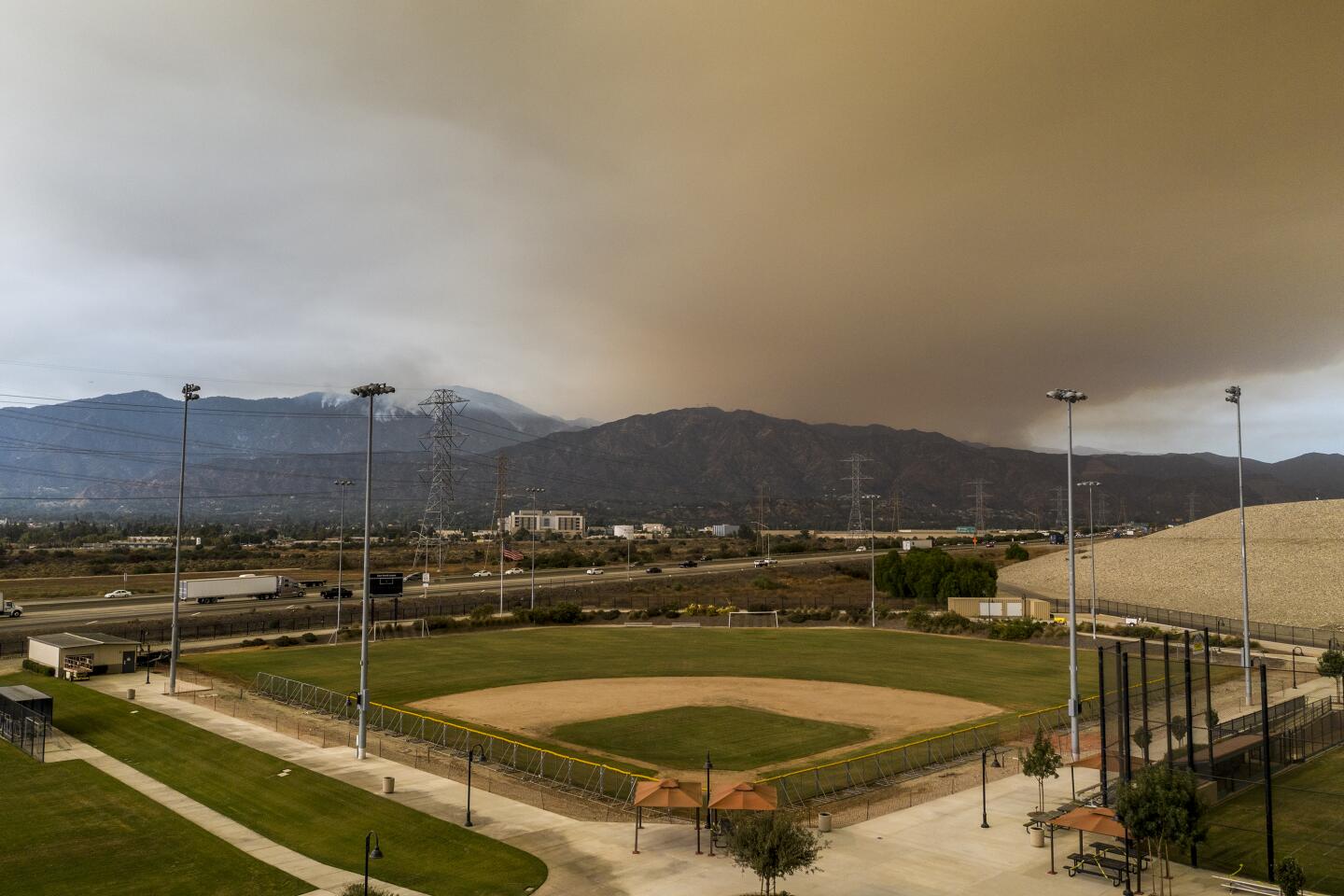California smoke headed to Europe as Mammoth Lakes suffers bad air ‘beyond index’
- Share via
Smoke from the West Coast’s ferocious firestorms continued to cause pollution problems in California and was expected to waft into Europe this week.
The historic fires have had air quality ramifications far and wide. The South Coast Air Quality Management District extended advisories for parts of the Southland for a 10th straight day. Onshore winds will probably begin moving smoke out of the South Coast Air Basin Wednesday afternoon. But conditions elsewhere remain grim.
Some areas around Bishop and Mammoth Lakes were listed as “beyond index,” meaning that “everyone should stay indoors and reduce activity levels,” according to air quality monitors. The air quality measurements reached 626, far beyond the 0-500 scale.
The inundation of smoke is severe enough to show up on satellite and is capturing the attention of scientists on both sides of the Atlantic Ocean.
“The fact that these fires are emitting so much pollution into the atmosphere that we can still see thick smoke over 8,000 kilometers [about 5,000 miles] away reflects just how devastating they have been in their magnitude and duration,” Mark Parrington, a senior scientist with the Europe-based Copernicus Atmosphere Monitoring Service, said in an article the agency posted Wednesday.
According to CAMS forecasts, smoke from the fires chewing through parts of California and the Pacific Northwest “is starting to cross the Atlantic again and will reach northern Europe later this week, as it did at the end of last week.” West Coast-originating smoke has previously been reported as far away as the Netherlands and Hamburg, Germany.
With all that smoke comes a tremendous amount of pollution, something to which Californians weary of hazy conditions and reddened skies can attest.
Readings taken over the last week have shown high-altitude concentrations of carbon monoxide that are more than 10 times above normal, according to NASA, with plumes originating near fires before entering the jet stream and being carried east.
Smoke from the Bobcat and El Dorado fires burning in Southern California continues to blanket the region, prompting the South Coast Air Quality Management District to issue its 10th straight day of advisories Wednesday.
Onshore winds were expected to begin moving smoke out of the South Coast Air Basin during the afternoon, the district said, but “modest smoke impacts” from Northern and Central California fires are likely to persist. Current air quality readings are lingering in the 150-200 range, which is considered unhealthful by the U.S. Environmental Protection Agency.
Hardware stores have seen a run on portable air purifiers as smoke from the Bobcat and El Dorado fires continues to blanket Southern California.
Downtown Portland, Ore., which has been subjected to particularly foul air quality because of nearby fires, was virtually deserted Tuesday afternoon.
Todd Piper, a valet at Embassy Suites by Hilton, said he stayed inside the hotel’s front door as much as possible to avoid the smoke.
“I feel like I’m more tired at the end of the day from breathing it,” he said.
Gone was the usual line outside Portland’s famous Voodoo Doughnut shop. That was fine with Brian Shackleford, 48, a visitor from Phoenix, who ducked in to buy one of its legendary bacon maple bars.
“I’m being cautious about going outside,” he said, “but I couldn’t pass this up.”
NASA has started flying aircraft over California’s new burn areas, both to identify damaged structures and map fire-stripped landscapes that could be at risk of future landslides or other debris flows.
More than 4,200 structures have been destroyed statewide since Aug. 15 — the first day of a historic lightning siege that sparked some of the largest wildfires the state had seen, according to the California Department of Forestry and Fire Protection.
“We had a perfect storm of meteorological factors come together that encouraged extreme burning,” Vincent Ambrosia, associate program manager for wildfire research in NASA’s Earth Applied Sciences Program, said in a statement. “That was layered on top of shifting climate patterns — a long-term drying and warming of both the air and vegetation — that is contributing to the growing trend we are seeing toward larger, higher-intensity fires in the U.S. West.”
Plumes from deadly, record-breaking fires are being carried in the jet stream across the globe, the National Weather Service reports.
The mammoth scale of California’s record firestorm speaks to that trend. So far this year, fires have scorched more than 3.3 million acres statewide — an area larger than the state of Connecticut.
Four of the six largest fires in recorded state history have ignited in the past month, according to Cal Fire.
Gov. Gavin Newsom said Wednesday that upkeep was a significant part of the equation — “we all recognize our responsibility, mutual responsibility, the federal government, the state government, private landowners, all of us doing more and doing better in terms of our vegetation management efforts, our forest management efforts ... and that, of course, is being advanced in ways that we have not seen in the past.”
He reemphasized, though, that climate change had played a substantial role in setting the stage for California’s historic fire season.
“We need to reconcile the fact there are no Democratic thermometers and no Republican thermometers. There’s fact and there’s reality, as well as observed evidence,” he said during a news briefing. “It’s not a belief system. It’s an acknowledgment. The facts are the facts.”
That collection of colossal conflagrations includes the August Complex fire burning in Mendocino, Humboldt, Del Norte and Trinity counties — the biggest on record at more than 796,000 acres.
This year has also seen one of California’s most deadly fires: the North Complex fire near Oroville, whose death toll now stands at 15. Overall, 25 Californians have died in the recent firestorm.
The cost of fighting multiple large-scale fires across California neared $580 million as of Tuesday, already surpassing the money approved by the state in July for the entire fiscal year.
State officials this month set aside additional funds and can, if needed, tap into short-term cash reserves to cover the remaining costs.
“I just want to express our deepest condolences to the families that have lost loved ones and to the heroism of our first responders that have been out there doing their best to support evacuation efforts,” Newsom said.
Times staff writers Hayley Smith in Los Angeles, John Myers in Sacramento and Richard Read in Portland contributed to this report .
More to Read
Sign up for Essential California
The most important California stories and recommendations in your inbox every morning.
You may occasionally receive promotional content from the Los Angeles Times.
